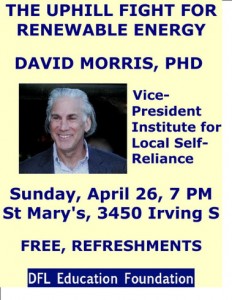Xcel’s applied for Hiawatha Project
April 28th, 2009
HEY MOES, I’D SIGNED UP FOR THE LIST AND AS OF TODAY, 4/28, HAVE NOT RECEIVED NOTICE OF THIS PROJECT APPLICATION THAT YOU’VE POSTED ON APRIL 24! WHAT GIVES?
Here’s the state’s routing webpage – HERE’S THE LINK FOR APPLICATION AND TO SIGN UP FOR FURTHER INFORMATION:
Now take a look at this map for the FULL plan, well, at least a larger picture, than what they’re disclosing for the Hiawatha Project. Here’s the map, and note carefully, from B-C is what they’re calling the Hiawatha Project. tHIS SECTION IS FOR XCEL’s PAM RASMUSSEN, WHO HATES IT WHEN I PUBLISH THIS MAP, SO I’VE GOT TO BE VERY SPECIFIC WHERE THIS INFORMATION IS COMING FROM AND WHAT CONSTITUTES THE “HIAWATHA PROJECT” and as far as Xcel is disclosing, the applied for Hiawatha Project is “B-C” of this map. Look below to see where the rest comes from!
Here’s the NM-SPG meeting minutes reporting on the A-B link, the 345kV line from a new substation on Hwy 280 (A) to the new Hiawatha Project substation (B).
Then there’s “Hiawatha Project” from B-C.
For C, D and E, see the “Minnesota Transmission Owners” 2007 Biennial Transmission Plan, where they list these extension alternatives:
Alternatives. Initial investigation and scoping discussions have led to the development of three potential alternatives:
(1) Construct a new 115 kV line from a new Hiawatha Substation along Highway 55 to a new Oakland Substation near Lake Street and I-35W. The line would then continue south to a new Highway 62 Substation near Highway 62 and Nicollet Avenue. The line would continue to its final termination at a new Penn Lake Substation near I-494 and Sheridan Avenue.
(2) Similar to Option 1, but the final 115 kV line would stretch from Highway 62 Substation to the existing Wilson Substation near I-494 and Wentworth Avenue.
(3) Construct two smaller 115 kV loops with new 115 kV lines running from Hiawatha to Oakland to Elliot Park and a second loop from Penn Lake to Highway 62 to Wilson.
Section 7 of Biennial Transmission Plan, go to Section 7.5 and all the way down to 3rd and 4th to last pages:
Another point to note: the Hiawatha Project is WAY over spec’d. This is a double circuited ACSS 795kCmil conductor — see what that means and compare it with the claimed 100MW need in the FUTURE!
And now, for today’s STrib article:
Will burying power lines in Midtown bury city, users with $12.6 million bill?
David Morris on PUC process and Capx 2020 decision
April 24th, 2009
Once more, it’s David Morris, Institute for Local Self Reliance, telling it like it is. The PUC process is long over do a complete revamping. It is based on laws and rules that grew out of the 1970s-1980s transmission fights, and gave people a useful and meaningful way to participate in these proceedings. But that’s gone, gone with the 2001 changes, gone with the 2005 Transmission Omnibus Bill from Hell, and we’re left with just about nothing. In other states, there’s Intervenor Compensation which allows Intervenors the ability to pay for expert witnesses, there are free transcripts as a matter of course, and there’s encouragement and support of Intervenors, not a drive to push them out of the process that we see here, that we saw in this CapX proceeding, when the ALJ tried to boot out U-CAN; that we saw in the Excelsior Energy docket (scroll down to “Fourth Prehearing Order”).
David Morris: If it’s citizens vs. utilities, utilities win
The PUC has an approval process that stacks the deck against the public.
By DAVID MORRIS
Last update: April 23, 2009 – 6:50 PM
A few days ago, the Minnesota Public Utilities Commission (PUC) approved a massive high-voltage transmission project known as CapX that will cost Minnesotans an amount equal to the projected biennial state budget deficit and four times the total bill to taxpayers for the Twins and Gophers stadiums.
With respect to the stadiums, Minnesotans were able to actively participate in the decisions, both directly and indirectly through elected representatives. Both those in favor and those opposed to using tax dollars to pay for the stadiums engaged in a spirited public debate. The Legislature is currently just as vigorously debating ways it can eliminate the budget deficit.
The PUC process, on the other hand, is much more hostile to citizen participation and influence. Indeed, the deck is stacked against the average citizen. Utilities have a virtually unlimited budget to argue their positions — a budget they raise from their ratepayers. Citizens, on the other hand, must raise their own money, and lots of it, to participate effectively.
The rules under which the PUC operates are established by the Legislature. Utility lobbyists are powerful there. But they’re not all-powerful. Thus, over the years, Minnesotans have been able to enact rules to help level the playing field for citizens. For example, the law requires the PUC to reject an application to build a large power plant or a high-voltage transmission line unless the utility proves it is needed to improve reliability or meet increased demand or achieve renewable-energy goals. As part of the application, the utility is expected to thoroughly and completely explore alternatives to its proposal, including no-build options. The burden of proof on whether a project is needed rests with the utilities.
The PUC, regrettably, has interpreted this rule so as to turn it on its head. At the PUC, the burden of proof rests with those opposed to a new power plant or high-voltage transmission line. It is up to the people whose homes and farms may be seized by utilities if a project is approved to make the case for alternatives. Doing so requires an extremely high level of technical expertise. A serious technical and economic examination of alternatives can cost $100,000 to $200,000 or more.
Even if citizens are able to raise that kind of money, they face other hurdles. To analyze alternatives, they must access data that only utilities possess. In many cases, the utilities call that data proprietary and argue that to make the information public is to give a possible advantage to a competitor. One would think that this would be a hard argument to make. After all, Minnesota utilities have a monopoly on the sale of electricity. Apparently, however, it is not a hard argument to make at the PUC.
A formal proceeding, such as a judicial proceeding, involves the cross-examination of witnesses. In many proceedings, utilities again tax their customers by using ratepayer money to acquire a transcript. One would think that since the transcript is in electronic form, the PUC would post it and make it freely available to the public. Astonishingly, the PUC rules state that court reporters own the transcript! Citizens and other intervenors must pay for their own copies of transcripts, which, for controversial projects, could mean $5,000 to $10,000 per copy.
In the recent CapX transmission case, the PUC went one step further in denying citizens. The need for the transmission lines was based in large part on a projection of significantly increasing demand. That projection was largely made in forecasts completed in 2004. It has already proven to be vastly overstated. Moreover, the current economic collapse is translating into shrinking, not growing, electricity demand. Hundreds of citizens asked the PUC to take this new information into account and keep the proceeding open. The PUC decided the current economic free fall doesn’t make a difference.
Utilities are gearing up to ask the PUC to spend billions more for even higher-voltage transmission lines. These will be built to send electricity from the Dakotas to Chicago and New York while running right through Minnesota. If these lines are approved, Minnesotans will probably pay most of the costs, while receiving little if any benefit.
Imagine if legislators proposed taxing us to build a sports stadium in Chicago. The proposal would be dead on arrival. Citizens have influence and even power in the Legislature. The process and rules at the PUC must be redesigned to allow them similar access and influence over energy decisions.
David Morris is vice president of the Institute for Local Self-Reliance, based in Minneapolis and Washington, D.C.
PJM demand decrease 3.6%
April 16th, 2009
A quick post before heading off to the PUC for more CapX 2020…
A new little birdie sent some delightful PJM info, all about decreased demand, keep in mind, this is 2006-2007, and NOTE IT WAS ALREADY DROPPING THEN.
From FERC – Electric Power Markets PJM:
All time peak demand: 144,644 MW (set August 2, 2006)
Peak demand growth (2006-2007): Peak demand declined 3.6%
| 2006 | 2007 | |
|---|---|---|
| Summer Peak Demand (MW) | 144,644 | 139,438 |
| (Source: PJM) | ||
There, you’ll find PJM State of the Market, Vol. 1 & 2
PJM State of the Market Report Volume 1
Pg 12: “Aggregate supply increased by about 15 MH when comparing the summer of 2008 to 2007 while aggregate peak load decreased by 9,328 MW …”
Pg 22: ” In the Real Time Market in 2008 there were net exports at 16 of PJM’s 20 interfaces …”
Pg 31: “Imports & Exports Net exchange decreased 248.5 MW …..)
Pg 45 : ” Demand … It is not clear why the demand identified in the market solution is consistently less than the demand identified by the system operators.”
Pg 50: discussion on Congestion & its costs
PJM State of the Market, Vol. 1
PJM State of the Market, Vol. 2
adsfad
CapX 2020 Certificate of Need at PUC
April 13th, 2009
This is a big week at the Minnesota Public Utilities Commission. They’re going to hear our arguments and decide whether CapX 2020 transmission, Phase I, is “needed” or not… a lot is riding on this, the direction of Minnesota’s energy future. Will we be doing it differently, or will we be stuck in the same central station coal scenario?
CapX Certificate of Need Argument & Deliberation
April 15th & 16, starting at 9:30 a.m.
Public Utilities Commission
Large Hearing Room – 3rd Floor
121 – 7th St. East
St. Paul, MN 55101
FERC Order re: Green Power Express transmission
April 12th, 2009
A little over a month ago, ITC Holdings filed a rate request with FERC, and utilities in the Midwest got to it and filed “protests” and petitions to intervene in that docket. FERC had extended the Comment period until March 6, and oh, did they get comments. The Who’s Who of utilities, with big emphasis on the Midwest, “our friends” at Xcel represented in a number of capacities… and even National Wind and Goodhue Wind!
A little birdie dropped off a notice that FERC had issued an Order:
I’ve just skimmed it so far, but it looks like they pretty much gave Green Power Express (a/k/a ITC Holdings) the whole enchilada… what they’re asking for is the ability to recover $$$ before the line is even energized, which is absurd, but that’s what all these utiltiies have been asking for and getting, so it’s not really anything new. Theh difference, it appears, is that ITC is pushing into Xcel’s transmission territory, and Xcel isn’t too happy about it. The Green Power Express is essentially the Midwest part of JCSP and METP 08, but maybe there’s … ahem… a little confusion about just who was going to build that transmission?!?!? FERC accepted responses of GPE to Comments, and accepted a response of MISO to comments (in which MISO is siding with GPE), but they rejected all the others, like Xcel, GRE, etc., the ones opposing GPE. Xcel’s probably not used to getting dissed!
I’m really not sure what to think about this. The project shouldn’t be built, it’s not needed, that’s for sure, and they shouldn’t get rate recovery, that’s also for sure, but I’ve got to give them a few points for butting in on Xcel’s action.
… and now I’ve finally read the whole thing, and it redefines “Shock and Awe” — this FERC Order gives them 99% of what they asked for, and seemed to bend over in doing so, doing everything they can to give Green Power Express the green light, and to start collecting $$$ right away. So we’ll be paying for this, and even if it’s not built, we’ll be paying for it. This transmission binge is reminding me of the nuclear days of the 70s, and we are going to get hit so hard. What are these yahoos thinking?
What next? Well, I hope that Illinois and New York will get to it and let FERC and Green Power Experss that “WE DON’T NEED NO STINKIN’ TRANSMISSION!” New York has been doing a good job thus far giving JCSP the finger, and I hope they continue, because this, logically, will have coal on the wires and will facilitate construction of new coal plants in the Midwest.
Hmmmm… my brain just did a “frolic & detour” — “Coal on the Conductors” just popped in …
Going into the CapX hearing with all this transmission lining up… (she says, shaking her head in disgust)





